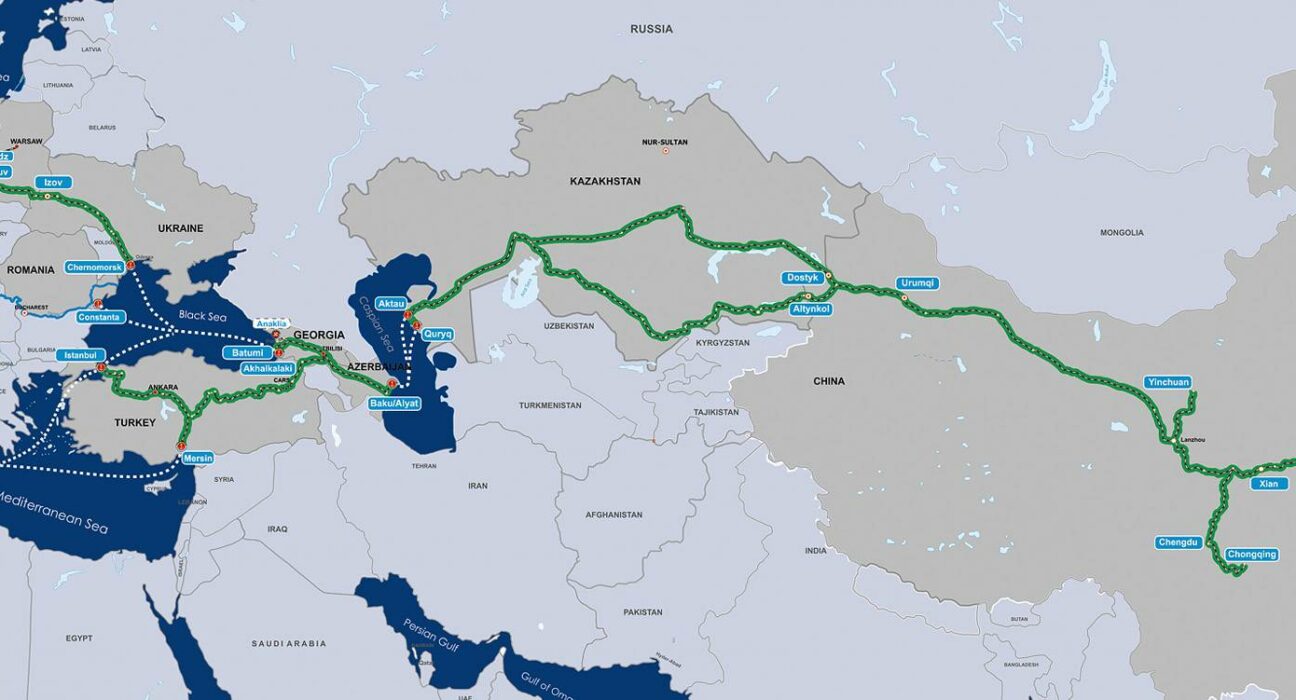Marat Karabayev, Kazakhstan’s minister of transport, believes that as a bridge between the East and the West, Kazakhstan will continue to play its part in facilitating regional and global trade.
In his article published in the Chinese publication, South China Morning Post, Karabayev says that trade between Asia and Europe has faced challenges as a result of geopolitical tensions, including conflicts and supply chain disruptions.
According to the minister, as the largest country in Central Asia, situated between Asia and Europe, Kazakhstan serves as an important transit hub for trade between the two continents. Kazakhstan accounts for over 80 percent of all land transit traffic from China to Europe, offering faster and more efficient alternatives to traditional maritime routes.
In 2022, over 23 million tons of goods were transported via rail between Kazakhstan and China, a figure that has since increased by 22 percent.
For many years, Kazakhstan has been pivotal to China’s Belt and Road Initiative, but new geopolitical realities call for additional transit routes to boost trade between Asia and Europe. The Trans-Caspian International Transport Route, also known as the Middle Corridor, is crucial in this regard, the minister believes.
The Middle Corridor connects Southeast Asia and China with Europe, traversing Kazakhstan, the Caspian Sea, Azerbaijan, Georgia, and Turkey before reaching European Union countries. Last year, cargo transport along this route exceeded 2.7 million tons, growing by 86 percent. This figure is expected to grow further to reach 4.2 million tons this year.
Although the Middle Corridor has been developing over the past decade, progress has accelerated in the last three years due to geopolitical changes and navigation issues through the Suez Canal, a key shipping route. According to the UN, the number of container ships transiting the Suez Canal dropped by 67 percent last year.
The Kazakh minister says that the Middle Corridor can lower costs and offer a more sustainable trade route, as land-based transit like rail is more carbon-efficient than air or maritime freight. To realize the potential of the Middle Corridor and address the bottlenecks along the route, work is being done by Kazakhstan to improve infrastructure and terminal capacities, expand port capacities, increase rolling stock, remove administrative barriers and create favorable conditions for carriers. These efforts will increase the route’s capacity to 10 million tons per year by 2025.
The minister added that to date, Austria, Germany, Latvia, Lithuania, Estonia, and Hungary have expressed interest in joining the Trans-Caspian International Transport Route. The EU recently announced a €10 billion investment to bolster the Middle Corridor. The EU also plans to invest as much as €18.5 billion more to ensure that roads, railways, and the Kazakh seaports of Aktau and Kuryk can provide smart, safe, and fast transport services from China to Europe.
Photo: https://middlecorridor.com
